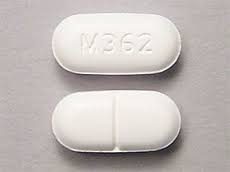Hydrocodone is an effective anesthetic with a narcotic effect and an antitussive drug. The other derivatives of Hydrocodone are vicodin, gicodan and tylox. Hydrocodone is very close by its properties to codeine, and the risk of addiction.
Side effects of the drug
The use of Hydrocodone and its analogs can cause:
[tie_list type=”checklist”]
- allergic reactions;
- frequent seizures;
- strong weakness;
- frequent vertigo.
[/tie_list]
The use of Hydrocodone can cause hyperventilating, yellowing of skin and eyes, strong weakness. Some people had hematomas and bleedings. The rare side effects include cramps, tinnitus, and severe hearing impairments up to its loss.
It is similar in its risk of addiction to codeine. The long-term use of high doses of Hydrocodone can cause light euphoria, and eventually- painful addiction. The overdose can cause headache, dry mouth, general weakness and drowsiness. It develops the same symptoms, as in the poisoning with codeine.
It should be remembered that Hydrocodone belongs to the opiates, and its long-term use can cause strong addiction.
Hydrocodone is usually issued in combination with acetaminophen or acetylsalicylic acid. Such combination provides the synergistic action, and the level of anesthesia corresponds the action of the double dose of each of these drugs. At the same time, the side effects are weakening.
Addiction and overdose
Hydrocodone and its varieties are tolerant, so, if the person uses it long, he/she needs higher and higher dose of this drug. They cause severe addiction- both physical and mental. Hydrocodone also has a withdrawal syndrome, resulting from the abrupt drug withdrawal.
In this period the person can have watery eyes, cold, lack of appetite and possible mental disease. The withdrawal syndrome is also characterized by cramps, chills, sickness and excessive perspiration. In this period the person is most vulnerable, he/she is always thinking about another dose of drug to relieve the suffering. At this time it is very important to control the addict’s conduct and actions, as he/she can start taking drugs again at any moment.
The overdose of these substances usually causes breathing problems, hand and leg cramps, weakness, and confusional conscience. His/her skin becomes cold and wet, the pupils are contracted, he/she is sick. The most severe cases can cause unconsciousness and coma.
Opiate addiction is one of the most severe forms of addiction, as they are recognized strong narcotic drugs and are included in the list of drugs, whose production and sale are strictly limited and controlled.





